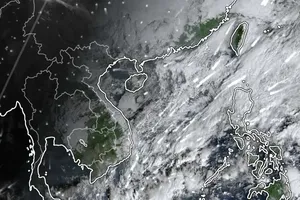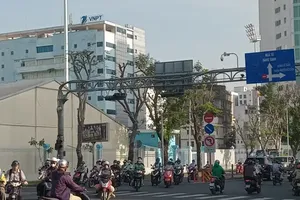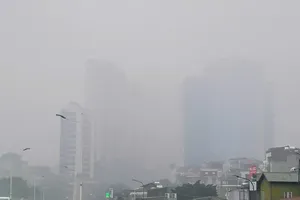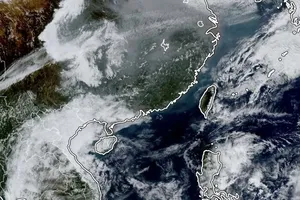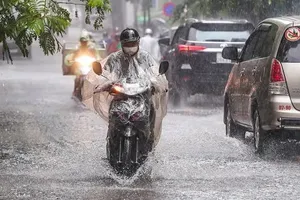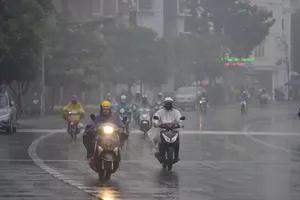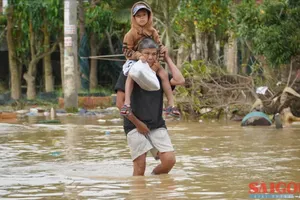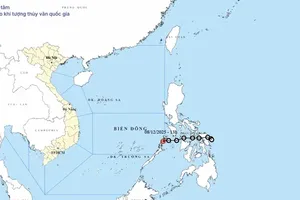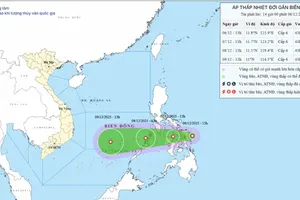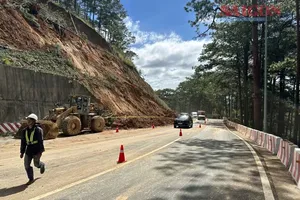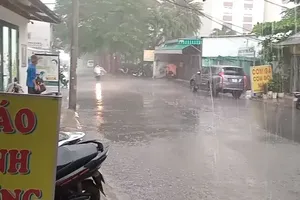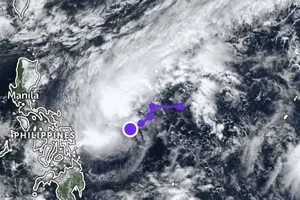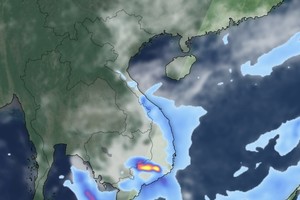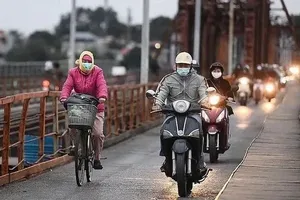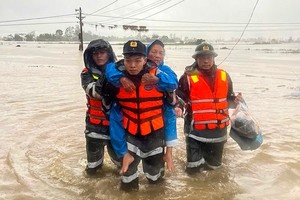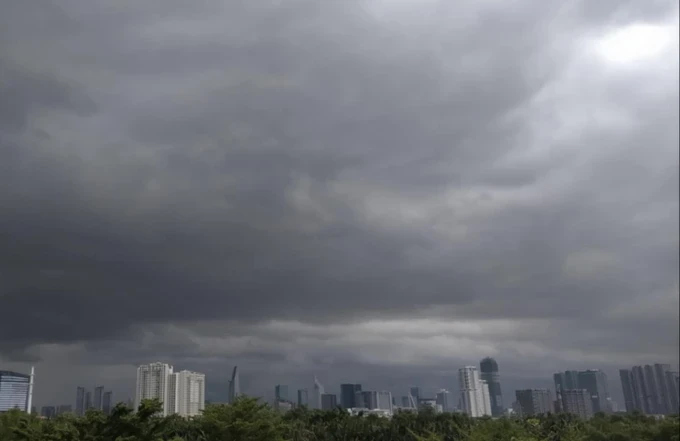
Following the latest weather news from the National Center for Meteorological and Hydrological Forecasting, a tropical low-pressure system has centered at approximately 14.3 degrees north latitude and 117.5 degrees east longitude, over the eastern waters of the middle of the East Sea. It moved northwest at an hourly speed of five to ten kilometers.
It is forecast that the tropical depression will grow to intensification, causing thundery showers, blustery winds, big waves and rough seas.
The tropical low-pressure system will be unlikely to enter the mainland of Vietnam. However, its circulation will trigger torrential rains across the Northern region next week.
In addition to the ongoing tropical depression in the middle of the East Sea, another one formed in the east of the Philippines, triggering intense rainfall activity.
The National Center for Hydrology Meteorology Forecasting warned of moderate to heavy rainfalls ranging from 40mm to above 150mm over the Central Highlands and Southern regions from July 19 to July 21.
On July 19, Deputy Minister of Agriculture and Rural Development Nguyen Hoang Hiep cum Deputy Head of the National Steering Committee for Natural Disaster Prevention and Control signed an official dispatch requesting coastal provinces and cities from Quang Ninh to Binh Thuan to prepare for the tropical low-pressure system in the East Sea.
By the evening of July 19, the Director of the Directorate of Dyke Management and Flood, Storm Control under the Ministry of Agriculture and Rural Development continued to issue an official letter to the Department of Agriculture and Rural Development of the Southern and Central Highlands provinces and cities urging them to implement measures to cope with heavy rainfall above mentioned.
In particular, the localities were required to monitor closely the warning and forecast, timely notify and provide guidance to all levels of government and people to proactively cope with natural disasters, mitigate damage and ensure safety; arrange response teams to inspect and review residential areas near rivers, streams, low-lying areas and areas prone to flooding, landslides and soil erosion; take proactive measures to evacuate and relocate residents promptly in case of emergencies and so on.
